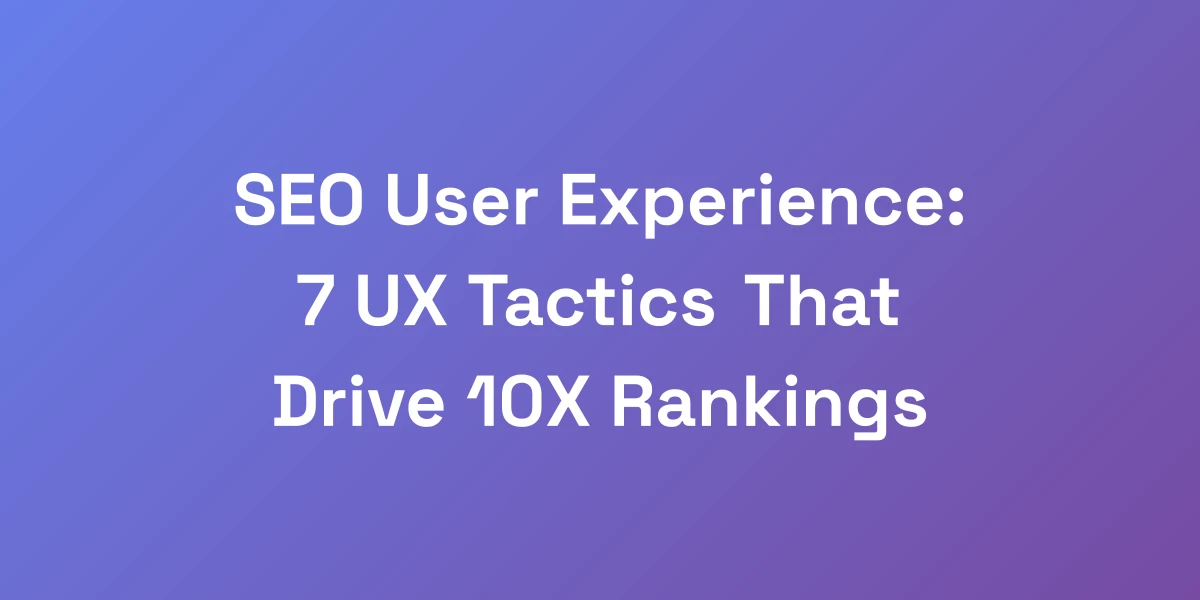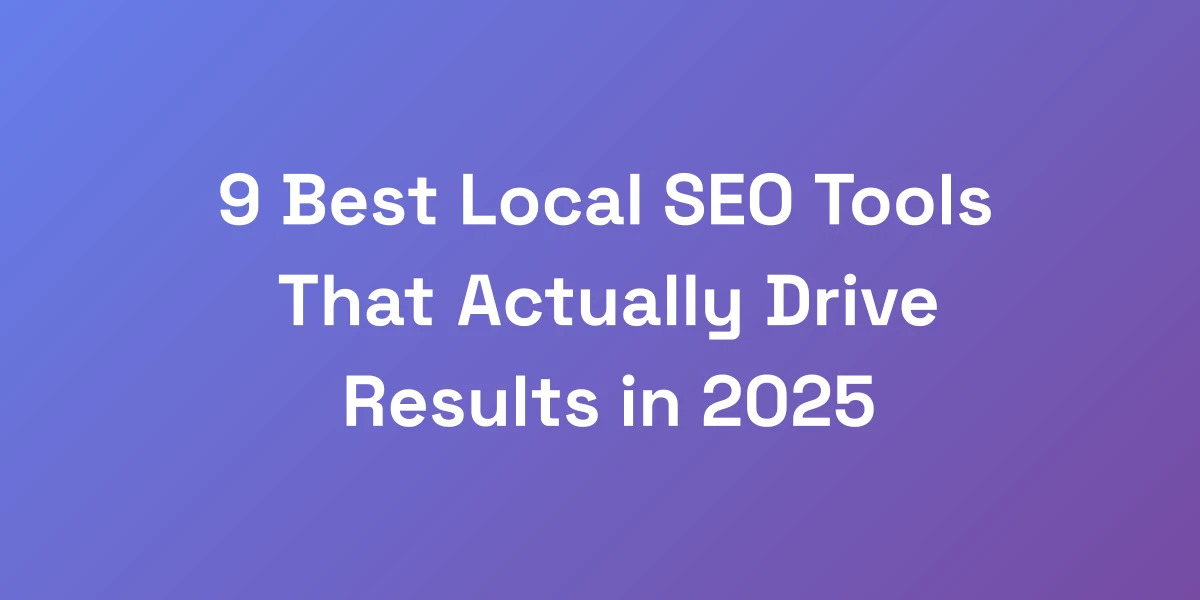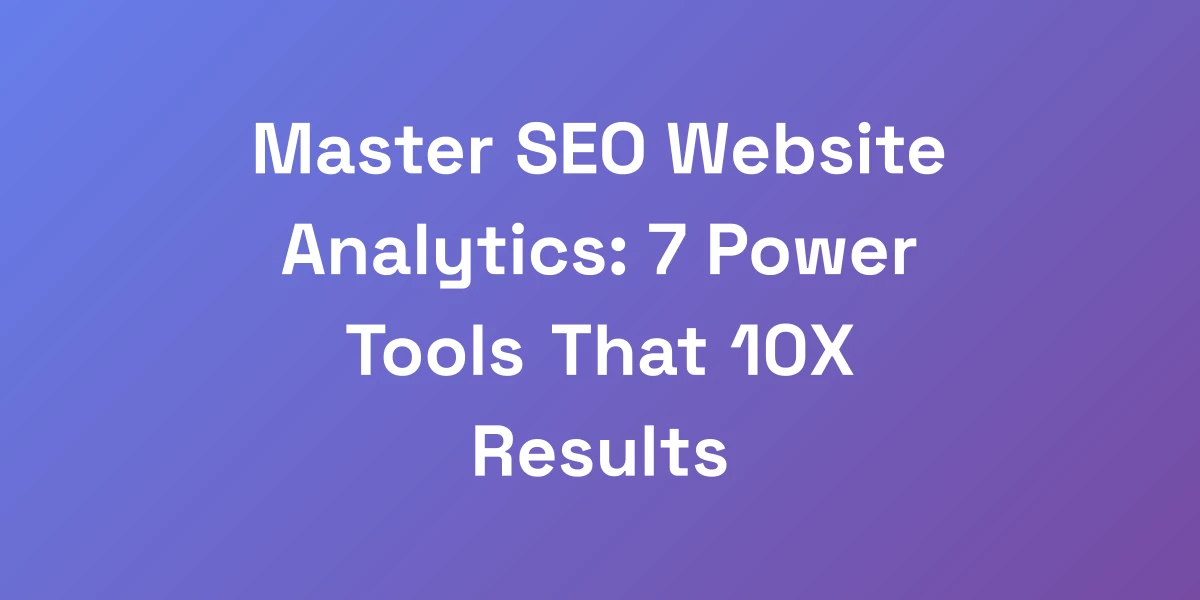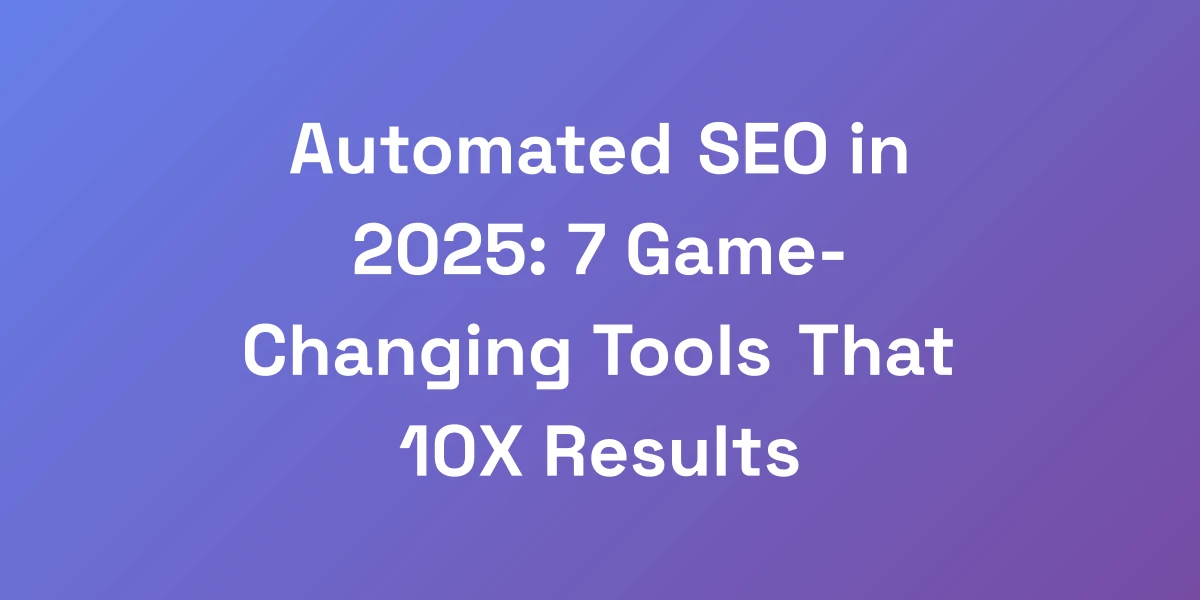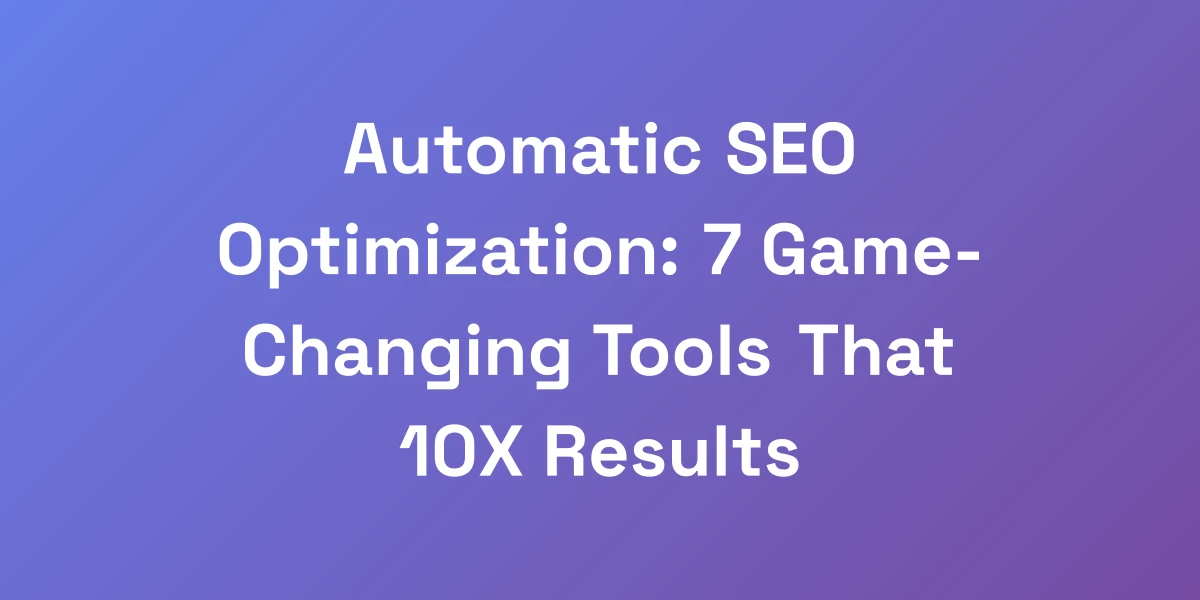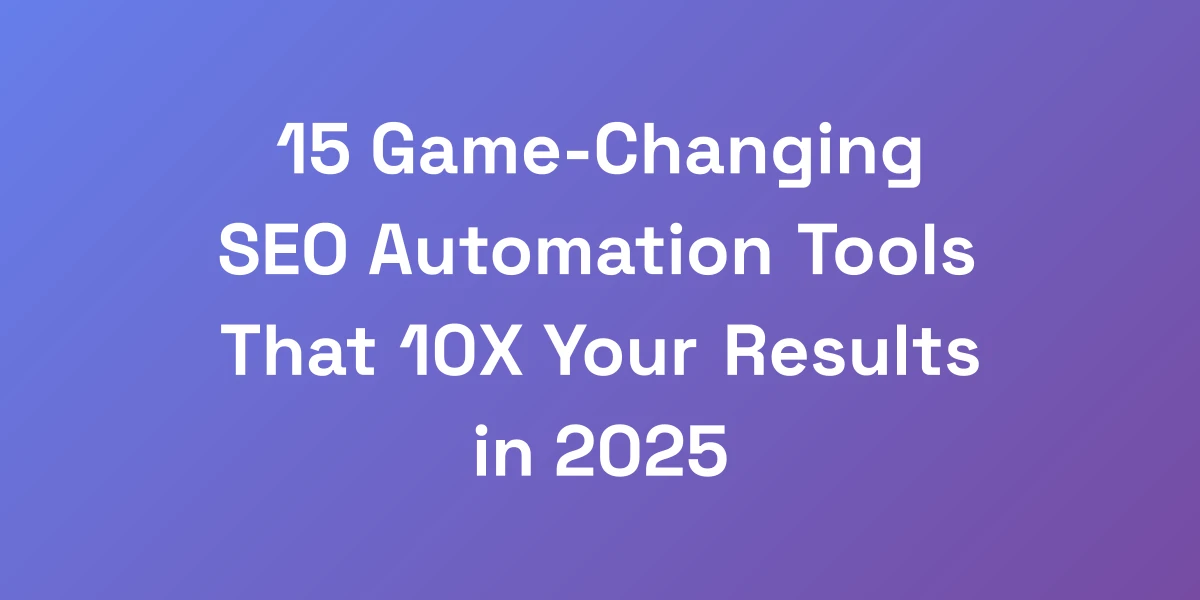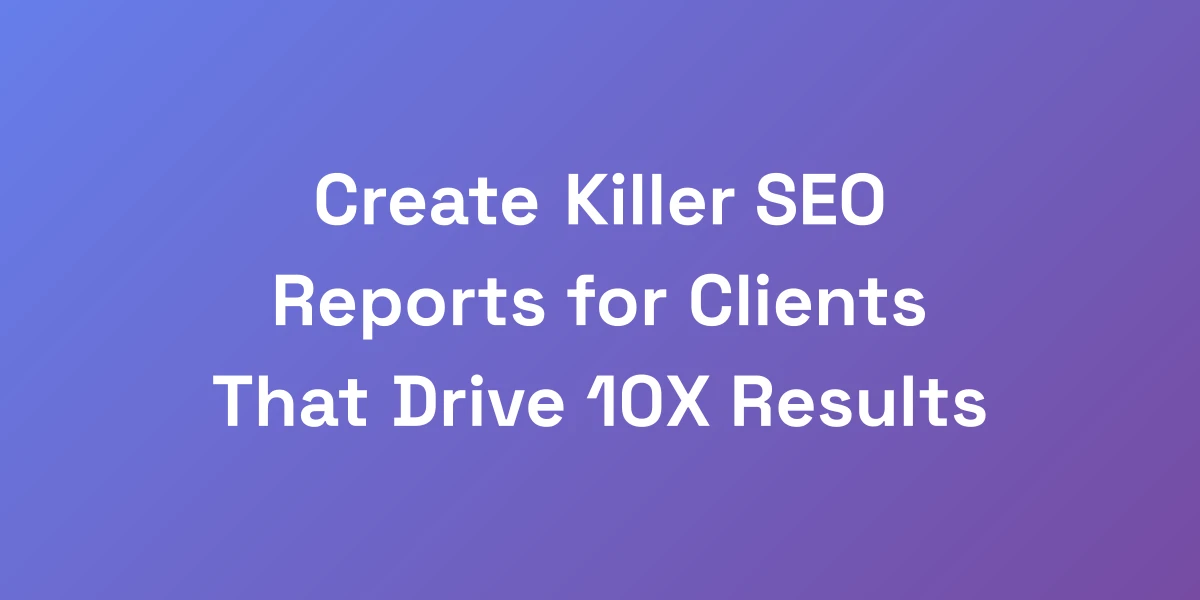
Create Killer SEO Reports for Clients That Drive 10X Results
Mar 16, 2025 | By [email protected]
Let me hit you with a truth bomb: your SEO report for clients isn’t just another piece of paper in their inbox. It’s your most powerful tool for customer retention and skyrocketing upsells. Think about it—how many times have you poured hours into optimizing a client’s website, only to watch them drift away because the value wasn’t clearly communicated?
This is the crux of the issue. You can crank out top-notch SEO strategies, but if your clients can’t see the tangible results, you’re just spinning your wheels. The challenge? Crafting reports that not only showcase your hard work but also make clients say, “Shut up and take my money.” In this article, we’re diving deep into how to create killer SEO reports that drive 10X results, ensuring your clients stay, invest more, and become your biggest advocates.
Ready to transform your reporting game? Let’s tear down the barriers and build a reporting system that doesn’t just inform but excites and compels your clients to take action.
The Psychology Behind Client-Converting SEO Reports
Here’s the secret sauce that most agencies overlook: SEO reporting is 80% psychology and 20% data. We’ve generated over $100M in client revenue, and trust me, it’s not the numbers alone that make the difference. It’s how you frame those numbers into a compelling narrative using psychological triggers.
Clients aren’t interested in technical jargon or endless charts. They want to know, “What does this mean for my business?” Let’s break down how to structure your reports to trigger immediate value recognition and keep your clients coming back for more.
Understanding Your Client’s Core Business Metrics
Start by diving deep into what matters most to your client. Are they focused on revenue growth, lead generation, or brand visibility? Understanding their core business metrics is crucial. Referencing key customer satisfaction metrics can help align SEO efforts with these goals.
- Revenue Growth: Highlight how SEO efforts directly contribute to sales increases.
- Lead Generation: Showcase improvements in lead quality and quantity.
- Brand Visibility: Demonstrate how higher rankings translate to better brand recognition.
By aligning your report with their primary business goals, you make the data relevant and actionable.
The Art of Translating SEO Data into Revenue Impact
It’s not enough to present data; you need to translate it into financial terms. For instance, if your SEO efforts have increased organic traffic by 50%, equate that to potential revenue growth based on their conversion rates.
- Example: If a client’s site saw a 50% increase in traffic, and their conversion rate is 2%, that’s a 1% uptick in conversions, which translates directly to additional sales.
- Case Study: We worked with a client in the e-commerce space, increased their organic traffic by 60%, and translated that into a projected $200K increase in annual revenue.
Psychology Triggers That Make Clients Stay and Pay More
Utilize psychological triggers like social proof, authority, and scarcity to enhance your reports. Additionally, incorporating emotional triggers can significantly boost client engagement and retention.
- Social Proof: Include testimonials or case studies from other satisfied clients.
- Authority: Position yourself as an expert by showcasing your industry knowledge and successful outcomes.
- Scarcity: Highlight limited-time opportunities or exclusive strategies to encourage immediate action.
These elements can significantly influence client perceptions and decision-making.
Common Reporting Mistakes That Kill Client Trust
Don’t fall into these traps:
- Overloading with Data: Avoid bombarding clients with too many metrics. Focus on what truly matters.
- Lack of Clarity: Ensure your report is easy to understand, avoiding unnecessary jargon.
- Inconsistent Reporting: Maintain a regular reporting schedule to build reliability and trust.
Steering clear of these mistakes will keep your clients confident in your abilities.
How to Structure Reports for Maximum Perceived Value
Structure is everything. Here’s how to make your reports not just readable but compelling:
- Executive Summary: Start with a high-level overview of key achievements and insights.
- Detailed Analysis: Break down the data into understandable sections, linking back to business goals.
- Action Items: Provide clear recommendations based on the data presented.
Each section should build on the last, creating a cohesive narrative that underscores your value.
Essential Metrics That Actually Matter to Clients
Forget the vanity metrics that don’t drive business decisions. Focus on the numbers that make clients instantly understand their ROI.
Revenue-Focused KPIs That Clients Actually Care About
These KPIs directly tie SEO efforts to financial outcomes:
- Organic Revenue: Track the revenue generated from organic search traffic.
- Customer Acquisition Cost (CAC): Show how SEO reduces the cost of acquiring each customer.
- Lifetime Value (LTV): Demonstrate how SEO attracts higher-value customers over time.
These metrics make the financial impact of SEO clear and compelling.
Converting Traffic Metrics into Business Opportunities
Traffic is just numbers until you convert it into business opportunities:
- Conversion Rates: Highlight the percentage of visitors turning into leads or sales.
- Engagement Metrics: Showcase time on site, page views, and bounce rates as indicators of content effectiveness.
- Lead Quality: Differentiate between leads generated and leads that convert.
By linking traffic to tangible business opportunities, you show the true value of your SEO efforts.
Competitive Edge Indicators That Drive Action
Show how your client stacks up against the competition:
- Market Share: Demonstrate growth in their share of organic search traffic compared to competitors.
- Keyword Positioning: Highlight improvements in key strategic keywords.
- Backlink Profile: Show how a robust backlink strategy is enhancing their authority.
These indicators position your client as a leader in their industry, motivating further investment.
Progress Tracking That Shows Clear Value
Consistent tracking over time is crucial:
- Month-over-Month Growth: Display consistent improvements in traffic, rankings, and conversions.
- Year-over-Year Comparisons: Highlight long-term growth and stability.
- Goal Achievement: Show how you’re meeting or exceeding predefined SEO goals.
This continuous tracking reinforces the ongoing value you provide.
Custom Metrics for Different Business Models
Tailor your metrics to align with the unique needs of different business models:
- E-commerce: Focus on metrics like cart abandonment rate and average order value.
- Local Businesses: Highlight local search visibility and Google My Business interactions.
- B2B: Emphasize lead quality and account-based marketing success.
Customizing your metrics ensures relevance and enhances client satisfaction.
Building Your Report Structure for Maximum Impact
Most SEO reports are snooze fests because they follow the same mundane template. Let’s break away from the norm with our proprietary Value-First Framework™, designed to retain clients with contract values exceeding $50k/month.
The Perfect Executive Summary Formula
Your executive summary should be a snapshot of success:
- Key Results: Highlight major achievements in traffic, rankings, and revenue.
- Strategic Insights: Provide a high-level analysis of what’s working and why.
- Next Steps: Outline actionable recommendations for future strategies.
This formula ensures your clients get the essential information upfront, setting the stage for deeper insights.
Visual Elements That Command Attention
Visuals are your best friend when it comes to making data digestible:
- Graphs and Charts: Use bar graphs, line charts, and pie charts to illustrate trends and comparisons.
- Infographics: Create infographics that summarize key data points in a visually appealing way.
- Heatmaps: Show user engagement through heatmaps for more detailed insights.
Effective visuals not only enhance understanding but also keep your clients engaged.
Strategic Data Presentation Techniques
How you present data can make or break your report’s impact:
- Storytelling: Weave data into a narrative that highlights successes and opportunities.
- Comparative Analysis: Compare data against benchmarks or competitor performance.
- Highlight Trends: Focus on emerging trends and what they mean for the client’s strategy.
Strategic presentation ensures your data tells a compelling story that resonates with clients.
Action Items That Drive Client Engagement
End each section with clear, actionable recommendations:
- Specific Tasks: Provide concrete steps clients can take based on the data.
- Prioritized Actions: Rank action items by importance and impact.
- Responsible Parties: Assign tasks to specific team members for accountability.
Action items transform insights into tangible actions, driving client engagement and results.
Future Opportunity Sections That Sell Themselves
Always leave room for future growth:
- Upcoming Trends: Highlight emerging SEO trends that the client can capitalize on.
- Expansion Opportunities: Suggest areas for expanding their SEO strategy.
- Long-Term Goals: Align future SEO efforts with the client’s long-term business objectives.
This forward-thinking approach positions you as a partner invested in the client’s ongoing success.
Automation and Tools That Save 10+ Hours Per Report
Time is money. If you’re spending hours crafting reports manually, you’re bleeding profits. We’ve tested every tool on the market and invested over $50,000 in software to perfect the ideal stack that creates high-impact reports in minutes.
Essential Tools for Professional Report Creation
Here are the must-haves for automated, professional SEO reporting:
- Coupler.io: Integrate data from various sources and automate report generation. Learn more about Coupler.io SEO reporting tools.
- Looker Studio: Create dynamic dashboards and visualizations that update in real-time.
- SEMrush: Automate data collection and generate comprehensive SEO insights effortlessly. Explore SEMrush SEO tools.
These tools streamline the reporting process, allowing you to focus on strategy and client relationships.
Automation Workflows That Scale
Set up workflows that grow with your business:
- Data Integration: Seamlessly pull in data from multiple platforms like Google Analytics, SEMrush, and Ahrefs.
- Template Automation: Use pre-designed templates to maintain consistency across reports.
- Scheduling: Automate report generation on a monthly basis to ensure timely delivery.
Scalable workflows ensure efficiency and consistency as your client base expands.
Custom Dashboard Setup Guide
A custom dashboard can transform how you present data:
- Personalization: Tailor dashboards to highlight the metrics that matter most to each client.
- Interactivity: Allow clients to interact with the data for deeper insights.
- Real-Time Updates: Ensure dashboards reflect the latest data to provide up-to-date insights.
Custom dashboards enhance client experience by providing intuitive and relevant data visualizations.
Data Integration Best Practices
Combine data sources for a comprehensive view:
- Unified Data Sources: Integrate data from SEO tools, CRM systems, and analytics platforms.
- Data Consistency: Ensure all data is standardized and up-to-date for accuracy.
- Secure Data Handling: Protect client data with robust security measures.
Best practices in data integration ensure your reports are accurate, comprehensive, and secure.
Quality Control Systems for Automated Reports
Automation doesn’t mean neglecting quality:
- Regular Audits: Periodically review automated reports for accuracy and relevance.
- Error Checks: Implement systems to detect and correct data discrepancies.
- Feedback Loop: Collect client feedback to continually improve report quality.
Quality control ensures that your automated reports maintain high standards and client satisfaction.
Conclusion: Implementing Your New Reporting Strategy
Creating killer SEO reports isn’t just about compiling data—it’s about crafting a narrative that demonstrates undeniable value and drives client action. By understanding the psychology behind reporting, focusing on essential metrics, structuring your reports for maximum impact, and leveraging SEO reporting tools, you can transform your reporting process and achieve 10X results.
Remember, your SEO report is your gateway to client satisfaction, retention, and growth. Implement these strategies today and watch your client relationships thrive. Ready to elevate your SEO reporting game? Start applying these techniques now and see the difference it makes in your agency’s success.
We’d love to hear your thoughts! What’s your biggest challenge with SEO reporting? Drop a comment below and let’s discuss how you can overcome it.

